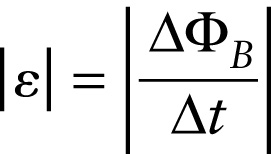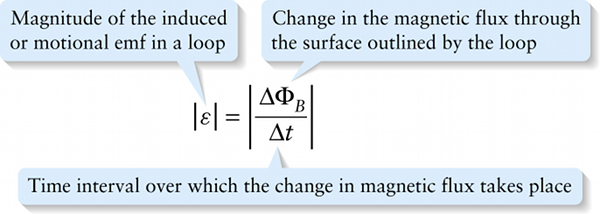Chapter 20. Faraday’s law of induction (20-2)
Question
+7Ws4hBdM8rNwM9yHasPvDK7phih1VAdGXOL/FqgnYHJ1pvrjurKDZ/3ZwLt9EJiBh9P/FiTnuc=
Question
FPeOmm2Hkz2wFl0xHELnGBC9huajwH7VTtuOd0t2RAKfW7pjGlA+oZugm54VJIhYmmIg8QhZ/4G9YI/6PzKHf+IUEznzfl10
Question
ANTPJu2UK12DFGKgtM+5KPaaQmVuFNmz8cvIsPUcAJzn066Q9COL4SAbkP4g7I6UdYuDv9Fkrr+XKkWFM6/y97cSEOE=
Review
This law states that the magnitude of the emf that appears in a loop is equal to the magnitude of the rate of change of the magnetic flux through the loop. If a large change in flux \(\Delta{\Phi_B}\) happens in a short time interval \(\Delta{t}\), the resulting emf has a large magnitude; if the change in flux is relatively small and happens over a long time interval, the resulting emf has a small magnitude.
Note that Equation 20-2 tells us only the magnitude of the emf, not its direction. In the following section we’ll see how the direction is determined.
